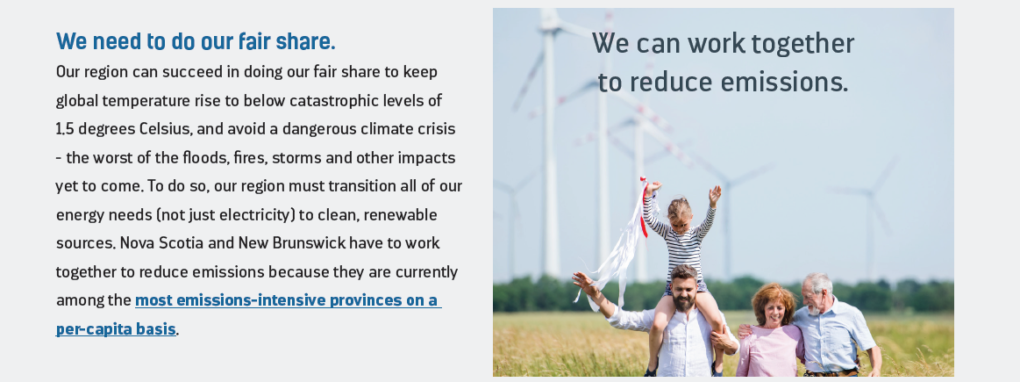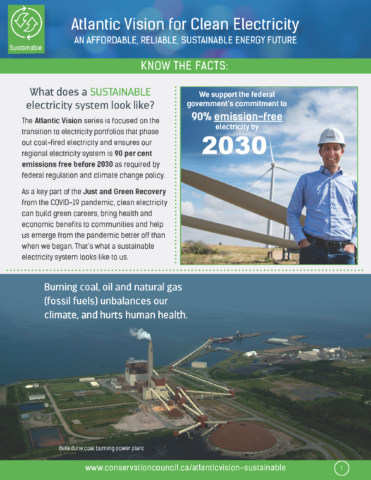Building a sustainable electricity system is possible, today
What does a sustainable electricity system look like?

The Atlantic Vision series is focused on the transition to electricity portfolios that phase out coal-fired electricity and ensures our regional electricity system is 90 per cent emissions free before 2030 as required by federal regulation and climate change policy. As a key part of the Just and Green Recovery from the COVID-19 pandemic, clean electricity can build green careers, bring health and economic benefits to communities and help us emerge from the pandemic better off than when we began. That’s what a sustainable electricity system looks like to us.
We believe cleaner electricity has two components. First, cleaner electricity relies primarily on non-polluting sources like wind, solar and hydro technologies and it is used efficiently. These renewable technologies have lower environmental impact than electricity generated from coal, oil and natural gas that generate greenhouse gases when burned causing the global heating that is supercharging our weather. Second, our sustainable electricity portfolio needs to be affordable and reliable.
We know that cleaner electricity is affordable, reliable and sustainable – and it’s ready to be deployed right now. The major barriers keeping us from achieving the clean electricity system we deserve are the outdated laws, rules and targets in our region. We need to come together to update the laws that control how we plan for future electricity systems, in order to ensure a safer, more secure and healthier future with clean electricity.
We need to avoid the risks, mistakes and delays that come with continued coal burning, more nuclear energy, and dependence on fossil fuels.
We need to build electricity connections to allow renewable energy like wind and solar to be reliable at all times of year, by backing it up with existing hydroelectric capacity, storage technologies, and collaboration with our neighbours.

